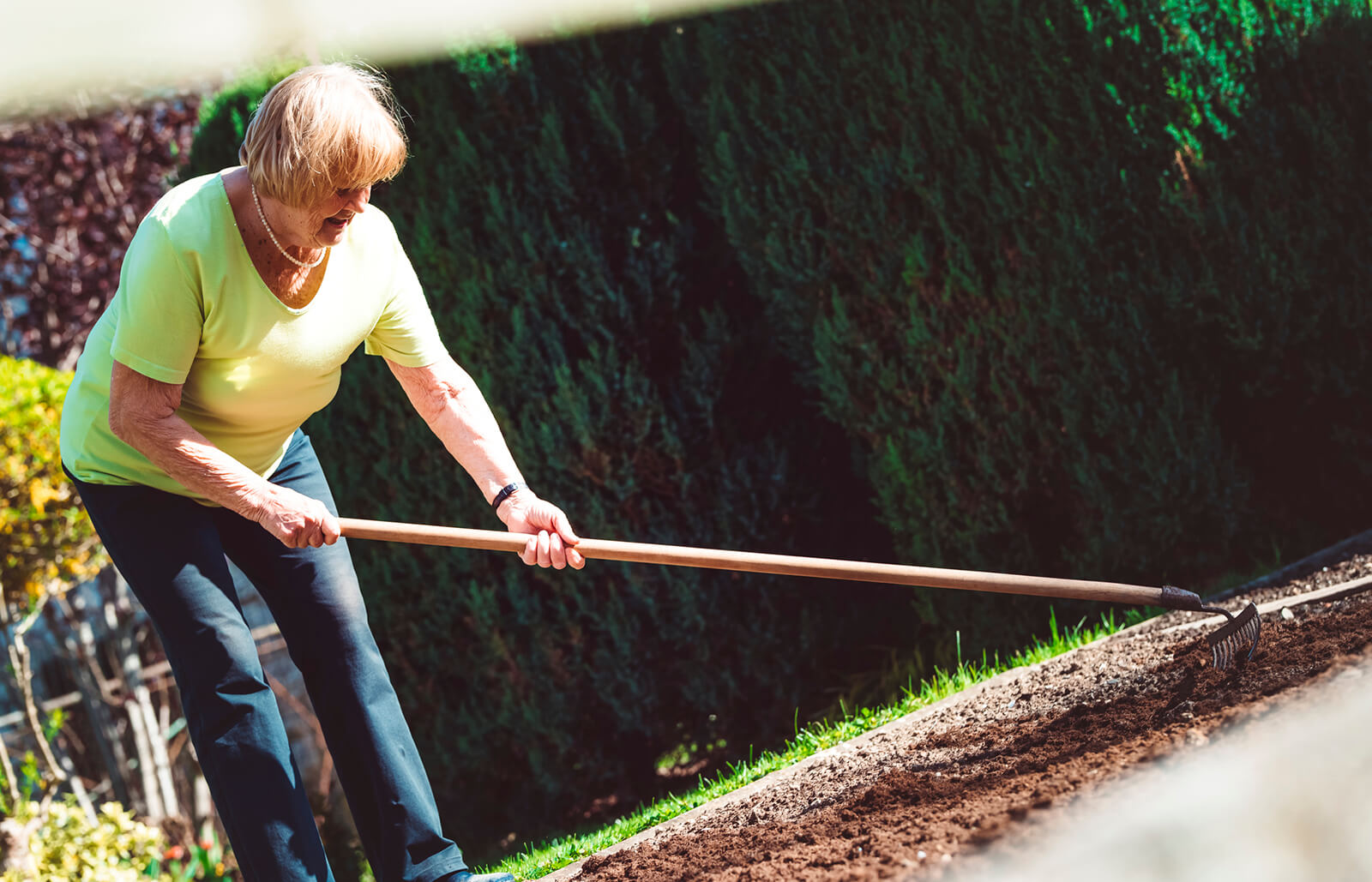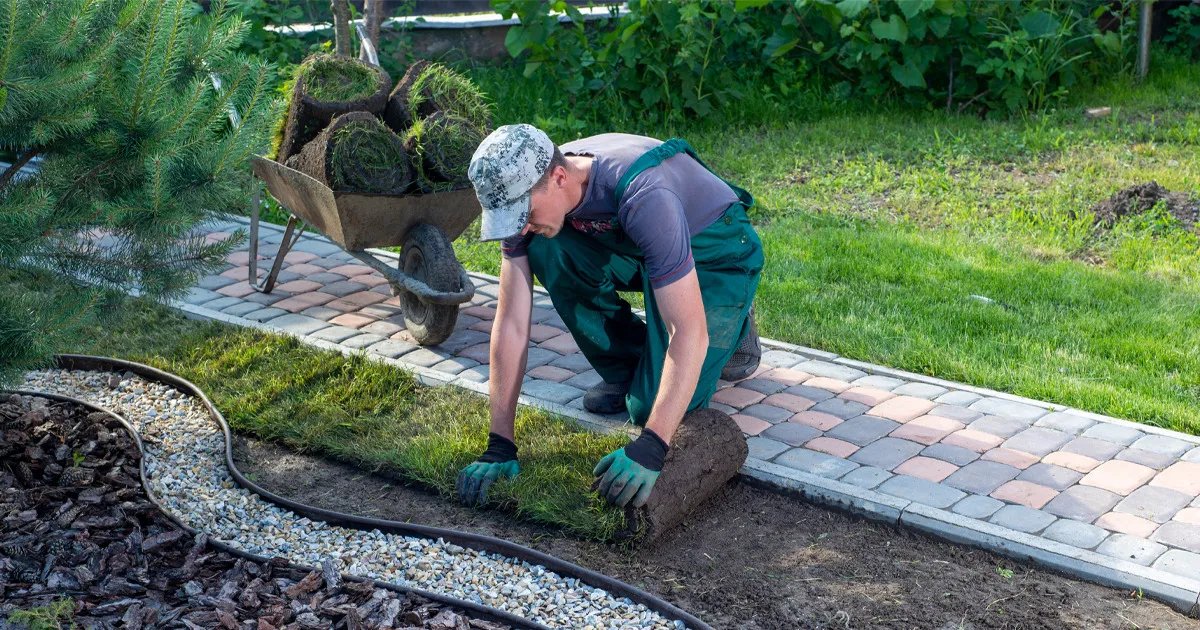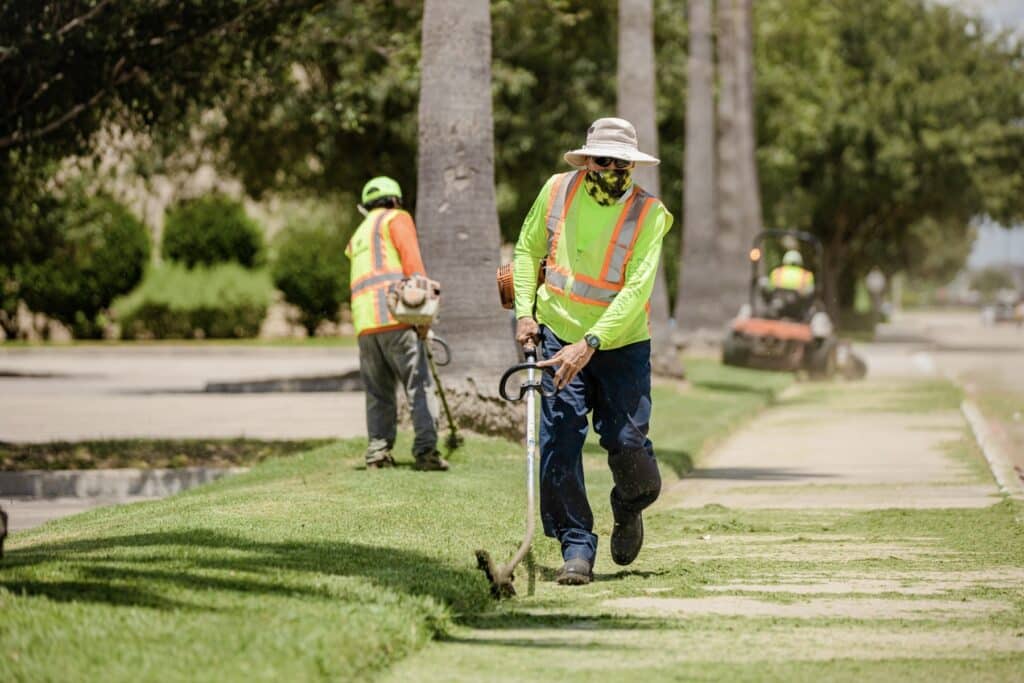Home>Gardening Basics>Getting Started>How Do I Get A Landscaping License


Getting Started
How Do I Get A Landscaping License
Modified: January 22, 2024
Learn how to get started with obtaining a landscaping license. Discover the necessary steps and requirements to begin your journey in the landscaping industry.
(Many of the links in this article redirect to a specific reviewed product. Your purchase of these products through affiliate links helps to generate commission for Chicagolandgardening.com, at no extra cost. Learn more)
Table of Contents
- Introduction
- Understanding the Landscaping License
- Steps to Obtain a Landscaping License
- Meeting the Education and Experience Requirements
- Completing the Application Process
- Taking the Written Examination
- Passing the Practical Exam
- Submitting the Required Fees and Documentation
- Obtaining Liability Insurance
- Joining Professional Landscaping Associations
- Maintaining the Landscaping License
- Conclusion
Introduction
Starting a career in landscaping can be a fulfilling and lucrative venture. Whether you have a passion for creating beautiful outdoor spaces or have a knack for designing breathtaking gardens, obtaining a landscaping license is a crucial step towards establishing yourself as a professional in this field.
A landscaping license not only demonstrates your expertise and dedication to your craft but also provides credibility and reassurance to potential clients. It showcases your commitment to following industry standards and adhering to best practices.
However, navigating the process of obtaining a landscaping license can be overwhelming, especially if you are unfamiliar with the requirements and procedures. This comprehensive guide aims to provide you with the necessary information and steps to help you on your journey to obtaining a landscaping license.
From understanding the necessary education and experience requirements to completing the application process and passing exams, this article will guide you through each step of the way. It will also provide valuable insights on maintaining your landscaping license and joining professional landscaping associations.
While the specific regulations and requirements for obtaining a landscaping license might vary depending on your location, this guide will give you a general overview to help you kickstart your licensing journey.
So, if you’re ready to take the next step in your landscaping career, let’s delve into the details of how you can obtain your landscaping license and embark on a successful and rewarding professional journey in the world of landscaping.
Understanding the Landscaping License
Before diving into the process of obtaining a landscaping license, it’s important to have a clear understanding of what it entails and why it is necessary. A landscaping license is a legal requirement that allows individuals to operate as professional landscapers and offer their services to clients.
The purpose of a landscaping license is to ensure that those in the industry have the necessary skills, knowledge, and qualifications to provide landscaping services effectively and safely. It helps protect both the consumers and the professionals by setting certain standards and regulations that must be met.
Obtaining a landscaping license not only demonstrates your commitment to professionalism but also provides clients with the assurance that you have undergone the required training and have the expertise to deliver high-quality results. It gives you a competitive edge in the industry and opens up various opportunities for growth and advancement.
Additionally, licensing ensures that the industry maintains a level of credibility and reputation. It helps protect against unqualified individuals or businesses offering subpar services, which can harm the overall industry and the trust of consumers.
The specific requirements and regulations for obtaining a landscaping license may vary depending on your location. Some jurisdictions may require a specific level of education, documented work experience, or passing an examination to demonstrate competency. It is important to research and familiarize yourself with the licensing requirements in your area.
Furthermore, it is essential to note that a landscaping license is not a one-time achievement. Many jurisdictions require landscapers to renew their license periodically, ensuring that they stay up-to-date with the latest techniques, regulations, and industry standards. Ongoing education and professional development are often necessary to maintain and renew a landscaping license.
By understanding the significance of a landscaping license and its role in the industry, you can recognize the value it brings to your professional journey. With this understanding in place, let’s now explore the steps involved in obtaining a landscaping license.
Steps to Obtain a Landscaping License
Obtaining a landscaping license involves a series of steps that vary depending on your location. While the specifics may differ, the following general outline provides a roadmap to help you navigate the process:
- Evaluate Requirements: Research and understand the specific licensing requirements in your jurisdiction. This includes educational qualifications, work experience, and any other prerequisites necessary to obtain a landscaping license.
- Meet Education and Experience Requirements: Complete any educational programs or courses required to meet the qualifications for a landscaping license. Some jurisdictions may require a minimum number of hours of education or specific coursework related to landscaping. Additionally, gain relevant work experience in the industry to fulfill the experience requirements.
- Complete the Application Process: Submit the necessary application forms and documents to the appropriate licensing authority in your area. This typically includes providing personal information, educational qualifications, work experience details, and references. Pay any applicable fees during the application process.
- Take the Written Examination: Depending on your jurisdiction, you may need to pass a written examination that tests your knowledge of landscaping principles, techniques, and regulations. Prepare for the exam by studying relevant materials and resources.
- Pass the Practical Exam: In some cases, a practical examination may be required to assess your practical skills in landscaping. This exam may involve tasks such as designing a landscape plan, installing hardscapes or irrigation systems, or demonstrating plant knowledge. Practice and prepare for this exam by honing your skills and familiarizing yourself with the test format.
- Submit Required Fees and Documentation: Along with your application, ensure that you provide any necessary fees and documentation as required by the licensing authority. This may include proof of liability insurance, a background check, and references from previous clients or employers.
- Obtain Liability Insurance: Many jurisdictions require landscapers to have liability insurance coverage to protect themselves and their clients in the event of accidents or property damage. Research and secure appropriate liability insurance that meets the requirements set forth by your licensing authority.
- Join Professional Landscaping Associations: Consider joining professional landscaping associations in your area or nationally. These associations offer networking opportunities, resources, and educational programs that can further enhance your career and provide ongoing support and development.
- Maintain the Landscaping License: Once you have obtained your landscaping license, it is essential to understand the maintenance requirements. Stay updated with continuing education and any renewal processes that may be necessary to keep your license current.
By following these steps, you can work towards obtaining your landscaping license and position yourself as a qualified and professional landscaper in your industry.
Meeting the Education and Experience Requirements
Meeting the education and experience requirements is a crucial step in obtaining a landscaping license. These requirements ensure that individuals have the necessary knowledge and skills to provide high-quality landscaping services. While the specific requirements may vary depending on your jurisdiction, here are some common considerations:
Educational Qualifications: Many licensing authorities require a certain level of formal education related to landscaping. This may include completing a degree or diploma program in landscape design, horticulture, or a related field. Research the educational requirements in your area and enroll in a recognized program that meets those standards.
Work Experience: In addition to formal education, gaining practical work experience is often a requirement for obtaining a landscaping license. This experience not only helps you develop essential skills but also demonstrates your competence in the field. Some jurisdictions may require a minimum number of years or hours of work experience in landscaping or a related field.
Apprenticeship Programs: Apprenticeship programs offer a valuable opportunity to gain hands-on experience while learning from experienced professionals. These programs typically combine on-the-job training with classroom instruction and can be beneficial in meeting the experience requirements for a landscaping license. Look for apprenticeship programs in your area and consider joining one to enhance your credentials.
Continuing Education: In some cases, maintaining a landscaping license may require ongoing professional development through continuing education. This ensures that licensed landscapers stay updated with the latest industry trends, techniques, and regulations. Consider attending workshops, seminars, or online courses to enhance your skills and meet the continuing education requirements.
Recognition of Prior Learning: In certain circumstances, you may be able to demonstrate your competency and meet the education or experience requirements through recognition of prior learning. This involves providing evidence of your skills, knowledge, and experience through a portfolio, assessments, or other means. Make sure to explore this option if you have relevant skills and experience that may qualify you for a landscaping license.
It is important to thoroughly research the education and experience requirements specific to your jurisdiction. Contact the licensing authority or consult their website to obtain accurate information. By understanding and meeting these requirements, you can ensure that you are on the right path to obtaining your landscaping license.
Completing the Application Process
Once you have met the necessary education and experience requirements for a landscaping license, the next step is to complete the application process. This process involves submitting the required forms and documents to the appropriate licensing authority in your jurisdiction. Here are some key steps to guide you through the application process:
Research the Application Requirements: Before starting the application process, it is essential to thoroughly research and understand the specific requirements set by the licensing authority. This includes gathering information on the necessary forms, supporting documents, and any fees that need to be submitted. Familiarize yourself with the application timeline and any additional requirements, such as background checks or references.
Prepare the Application Forms: Obtain the required application forms from the licensing authority or their website. Fill out these forms accurately and completely, ensuring that all information provided is up-to-date and reflects your qualifications and experience. Double-check for any supporting documents or signatures that may be required with the application form.
Gather Supporting Documents: In addition to the application form, you will likely need to provide various supporting documents to verify your qualifications and experience. These may include copies of your educational certificates or transcripts, letters of recommendation, work experience documentation, identification, and proof of residency. Organize these documents neatly and make copies for your records.
Pay the Application Fees: Most licensing authorities require applicants to submit a fee along with their application. Research the specific fee amount and the accepted method of payment. Be sure to include the correct payment with your application to avoid any delays or complications. Keep a copy of the payment receipt as proof of submission.
Submit the Application: Once all the necessary forms and documents are completed and ready, submit your application to the licensing authority by the designated method. This may include mailing the application package or submitting it in person at their office. Ensure that you follow the instructions provided and submit the application within the specified timeframe.
Follow Up and Notification: After submitting your application, it is important to follow up with the licensing authority to confirm that they have received your application and to inquire about the processing timeline. Some authorities may provide an estimated processing time or send a notification once your application has been reviewed. Stay proactive and reach out if you have not received any communication within the expected timeframe.
Completing the application process is a critical step in obtaining your landscaping license. By carefully following the requirements, organizing your documents, and submitting your application in a timely manner, you can increase the chances of a smooth and successful application process.
Taking the Written Examination
Once you have completed the application process for a landscaping license, you may be required to take a written examination to assess your knowledge and understanding of landscaping principles, techniques, and regulations. The written examination is an important step in demonstrating your competency in the field. Here are some key points to consider:
Study and Preparation: Preparing for the written examination is essential to increase your chances of success. Review the topics and subject areas that will be covered in the exam. This may include landscape design principles, plant identification, irrigation systems, soil management, safety regulations, and more. Create a study plan and allocate time to review relevant textbooks, study guides, online resources, and practice exams.
Understand the Exam Format: Familiarize yourself with the format of the written examination. It may be multiple-choice, true/false, or short-answer type questions. Understand the time restrictions, question structure, and any guidelines provided by the licensing authority. This will help you become more comfortable and confident during the exam.
Practice Past Exam Papers: One effective way to prepare for the written examination is to practice past exam papers. These papers can give you a sense of the types of questions that may be asked and the level of difficulty. Analyze your answers and identify areas you need to focus more on. Practice under timed conditions to improve your speed and efficiency in answering questions.
Seek Additional Resources: If you find certain topics challenging or need further clarification, don’t hesitate to seek additional resources. This could include consulting industry professionals, attending workshops or seminars, joining online discussion groups, or seeking guidance from experienced landscapers. Utilize resources that can help reinforce your understanding of key concepts and address any areas of weaknesses.
Stay Calm and Focused: On the day of the examination, it is important to stay calm and focused. Get a good night’s sleep and eat a nutritious breakfast to ensure you are mentally sharp. Arrive at the examination center early to familiarize yourself with the surroundings. Remember to read each question carefully before answering, manage your time effectively, and stay confident in your knowledge and preparation.
Review Your Results: After completing the written examination, the results will be provided by the licensing authority within a specified time frame. Take the time to review and reflect on your results, whether you pass or not. Identify areas of strength and areas that need improvement. This will help you further enhance your knowledge and skills in the field of landscaping.
Taking the written examination is a significant step towards obtaining your landscaping license. By dedicating time to study, staying focused during the exam, and utilizing available resources, you can increase your chances of success. Remember, the examination is an opportunity to showcase your knowledge and commitment to the profession. Embrace the challenge and approach it with confidence.
Passing the Practical Exam
In addition to the written examination, some jurisdictions may require individuals seeking a landscaping license to pass a practical exam. The practical exam is designed to assess your hands-on skills and ability to apply landscaping techniques in real-world scenarios. Here are some key factors to consider in order to pass the practical exam:
Understand the Exam Format: Familiarize yourself with the format of the practical exam. Understand what specific tasks or projects you will be required to complete and the criteria on which you will be evaluated. This may include aspects such as plant selection and installation, hardscape construction, irrigation system implementation, or landscape design execution.
Practice and Prepare: Preparation is crucial for success in the practical exam. Set aside time to practice the skills and techniques that are likely to be evaluated. This may involve honing your abilities in plant identification, soil preparation, grading, installing irrigation systems, or implementing design plans. Seek out opportunities to practice these skills in real-world scenarios or through simulated exercises.
Study Relevant Materials: Review any study materials, references, or instructions provided by the licensing authority for the practical exam. Ensure that you are familiar with industry best practices, safety protocols, and local regulations that may be applicable to the tasks or projects you will be required to complete. A solid understanding of these key elements will bolster your confidence and performance during the exam.
Time Management: Managing your time effectively during the practical exam is essential. Practice working efficiently to complete tasks within the allocated time frame. Prioritize your work, ensuring that you give each aspect of the exam the attention it deserves. Avoid rushing or sacrificing quality in your work due to time constraints.
Seek Guidance and Feedback: If possible, seek guidance from experienced landscapers or professionals who have previously taken the practical exam. They can provide insights into what evaluators are looking for and offer valuable tips to improve your performance. Consider participating in practice sessions or workshops specifically designed to prepare individuals for the practical exam.
Attention to Detail: Pay close attention to the specific requirements and details outlined in the practical exam. Take care to follow any guidelines provided and ensure that your work aligns with the expectations set by the licensing authority. Attention to detail in tasks such as plant spacing, soil composition, or design execution can make a significant difference in the evaluation process.
Maintain Professionalism: During the practical exam, it is important to conduct yourself in a professional manner. Demonstrate good communication skills, approach tasks with a positive attitude, and show respect for the evaluators and any fellow participants. Professionalism is a key attribute that evaluators often consider alongside technical proficiency.
Passing the practical exam is a crucial step in obtaining your landscaping license. By understanding the exam format, practicing and preparing diligently, managing your time effectively, and demonstrating professionalism, you can increase your chances of success. Embrace the opportunity to showcase your skills and enthusiasm for the landscaping industry.
Submitting the Required Fees and Documentation
Completing the application process for a landscaping license often involves submitting the required fees and documentation to the licensing authority. This step is crucial to ensure that your application is considered complete and can progress towards obtaining your license. Here are some important factors to consider:
Know the Fee Structure: Research and understand the fee structure set by the licensing authority. Different jurisdictions may have varying fee amounts depending on factors such as the type of license, renewal periods, and any additional services offered. Ensure that you have accurate information regarding the fees required for your specific license application.
Calculate and Prepare Payment: Calculate the total fee amount you need to remit and ensure that you have the necessary funds available. Prepare your payment using the approved methods specified by the licensing authority. This may include payment via check, money order, or online platforms. It is essential to follow the payment guidelines provided to avoid any delays or issues.
Double-Check Documentation Requirements: Review the documentation requirements provided by the licensing authority. Ensure that you have all the necessary paperwork, forms, and supporting documents ready for submission. This may include copies of educational certificates, identification documents, proof of work experience, references, or any other documentation specified by the licensing authority. Make sure these documents are current, accurately completed, and organized.
Organize and Make Copies: Maintain an organized system for your documents and keep copies of all paperwork for your records. This will help ensure that you have a backup if there are any issues with the original submission. Staying organized will also make it easier to refer back to specific documents during the application process.
Follow Submission Guidelines: Carefully follow the submission guidelines provided by the licensing authority. Check for any specific instructions regarding the format of application materials, supporting documents, or file size limitations. Failure to comply with these guidelines may result in delays or rejection of your application.
Keep Track of Submissions: Keep a record of when and how you submitted your fees and documentation. This can include making note of the date sent, the delivery method used, and any tracking numbers or receipts if applicable. Tracking your submissions will help you in case there are any inquiries or issues that arise during the processing of your application.
Stay Informed and Follow Up: After submitting your fees and documentation, stay informed by regularly checking the status of your application. Some licensing authorities may provide online portals or updates on the progress of your application. If there is a delay or if further clarification is needed, reach out to the licensing authority for any necessary follow-up.
Submitting the required fees and documentation is a crucial step in the application process for your landscaping license. By understanding the fee structure, carefully preparing your payment, organizing your documentation, and following the submission guidelines, you can ensure a smooth and successful application process.
Obtaining Liability Insurance
Obtaining liability insurance is a vital step for landscapers in protecting themselves and their clients. Liability insurance provides coverage in the event of accidents, property damage, or injuries that may occur during landscaping projects. Here are some important considerations for obtaining liability insurance:
Research Insurance Providers: Start by researching reputable insurance providers that offer liability insurance for landscapers. Look for providers with experience in the industry and a track record of providing comprehensive coverage. Compare quotes and coverage options to find the insurance policy that best suits your needs.
Determine Coverage Requirements: Understand the specific liability insurance requirements set by the licensing authority in your jurisdiction. They may mandate a minimum coverage amount or specify the types of coverage needed. Make sure to comply with these requirements to meet the licensing criteria.
Assess Your Risks: Assess the specific risks associated with your landscaping business. This may include hazards related to operating machinery, working at heights, dealing with hazardous materials, or potential damage to client property. Understanding your risks will help you choose appropriate coverage options.
Consider General Liability Insurance: General Liability Insurance is a common type of coverage that provides protection against claims for bodily injury, property damage, and personal injury. It can help cover medical expenses, legal fees, and settlements resulting from accidents or negligence on the job. General Liability Insurance is essential for any landscaping business.
Explore Additional Coverages: Depending on the nature of your work, you may need additional coverage beyond general liability insurance. Some options to consider include Professional Liability Insurance (Errors and Omissions coverage), Commercial Auto Insurance, Workers’ Compensation Insurance, and Equipment Insurance. Assess your insurance needs carefully to ensure you have adequate coverage for all aspects of your business.
Review Policy Terms and Exclusions: Carefully review the terms, conditions, and exclusions of the insurance policy. Understand what is covered and what is not covered. Pay attention to any limitations or exclusions, such as specific activities or locations that may not be covered by the policy. This will help you make informed decisions and avoid any surprises in case of a claim.
Consult with an Insurance Agent: To ensure that you have the right coverage and understand all aspects of your insurance policy, consider consulting with an insurance agent who specializes in liability insurance for landscapers. They can provide expert advice, answer your questions, and guide you in selecting the most suitable coverage options.
Maintain Required Coverage Levels: Once you have obtained liability insurance, it is important to maintain the required coverage levels. Keep your policy active and pay your premiums on time to ensure continuous coverage. Stay up-to-date with any changes in the insurance requirements set by the licensing authority and adjust your coverage as needed.
Obtaining liability insurance is an essential step in protecting your landscaping business and clients. By researching insurance providers, understanding your coverage needs, reviewing policy terms, and consulting with experts, you can ensure that you have the right insurance coverage to mitigate potential risks and provide peace of mind.
Joining Professional Landscaping Associations
Joining professional landscaping associations can be highly beneficial for individuals in the landscaping industry. These associations provide opportunities for networking, professional development, and staying updated with the latest industry trends and practices. Here are some key reasons why you should consider joining professional landscaping associations:
Networking Opportunities: Professional landscaping associations offer valuable networking opportunities with fellow landscapers, industry experts, suppliers, and potential clients. Engaging with professionals in the field allows you to exchange ideas, learn from their experiences, and create meaningful connections that can lead to collaborations or referrals.
Access to Resources: Many landscaping associations provide access to a wealth of resources that can help further your career. This may include educational materials, publications, industry research, best practices, and business tools. These resources can enhance your knowledge, skills, and overall professionalism as a landscaper.
Continuing Education: Professional landscaping associations often offer educational programs, workshops, seminars, and conferences to help members stay updated with industry advancements. These educational opportunities allow you to expand your knowledge, sharpen your skills, and keep pace with evolving trends, technologies, and regulations in the field.
Certification and Recognition: Some associations offer certification programs that provide recognition of your expertise and adherence to industry standards. These certifications serve as proof of your competency and can be a valuable addition to your credentials. Clients and employers often value certifications from respected professional associations, which can enhance your professional reputation.
Advocacy and Support: Professional associations act as advocates for the landscaping industry, representing the interests of their members and promoting the value and professionalism of the field. They may work towards improving industry regulations, promoting sustainable practices, and providing guidance in navigating challenges faced by landscapers. Being a part of such associations gives you a voice and the support of a collective community.
Opportunities for Recognition and Awards: Many professional landscaping associations recognize outstanding professionals in the field through awards, competitions, and events. Participating in these activities not only provides a platform to showcase your work but also fosters healthy competition and motivates you to continually strive for excellence.
Stay Updated with Industry Trends: By joining professional associations, you gain access to newsletters, journals, and online forums that keep you informed about industry trends, emerging technologies, and innovative landscaping practices. This knowledge allows you to stay ahead of the curve and offer the latest solutions to your clients.
Industry Support and Collaboration: Being part of a professional association fosters a sense of community and collaboration among landscapers. You can find support and guidance from fellow members who have likely faced similar challenges. These associations often foster a culture of sharing knowledge and experiences, creating a supportive network to help you navigate your career.
Consider researching and joining professional landscaping associations in your area or nationally. These associations can provide invaluable support, resources, and opportunities for growth in your landscaping career. Stay engaged, participate actively, and take advantage of the benefits these associations offer to enhance your professional journey as a landscaper.
Maintaining the Landscaping License
Once you have obtained your landscaping license, it is important to understand the requirements and responsibilities for maintaining it. By fulfilling these obligations, you can ensure that your license remains valid and current. Here are some key points to consider in maintaining your landscaping license:
Renewal Periods: Familiarize yourself with the renewal periods and deadlines for your landscaping license. Licensing authorities typically require landscapers to renew their licenses at regular intervals, usually annually or biennially. Stay updated on the renewal schedule to ensure that you submit the necessary paperwork and fees on time.
Continuing Education: Many jurisdictions require licensed landscapers to participate in continuing education programs to maintain their license. These programs provide ongoing professional development opportunities that help you stay current with industry trends, best practices, and new regulations. Stay informed about the specific continuing education requirements in your area and complete the necessary courses or workshops.
Adhering to Industry Standards: As a licensed landscaper, it is important to continue adhering to industry standards and best practices. Stay updated with the latest landscaping techniques, safety guidelines, and environmental regulations. This includes adopting sustainable practices, using quality materials, and ensuring the safety of your clients and the environment in all your landscaping projects.
Liability Insurance: Maintaining adequate liability insurance is crucial for maintaining your landscaping license. Regularly review your insurance policy to ensure that it meets the requirements set by the licensing authority. Renew your insurance coverage as necessary to maintain continuous protection for you and your clients.
Complying with Licensing Regulations: Stay informed and comply with all licensing regulations and requirements set by the licensing authority. This includes accurate record-keeping, reporting any changes in contact information or business details, and promptly addressing any requests or inquiries from the licensing authority. Failure to comply with licensing regulations can result in penalties or even the revocation of your license.
Engaging in Professional Development: Beyond continuing education, engage in additional professional development opportunities to enhance your skills and knowledge. Attend industry conferences, workshops, and seminars. Join webinars or online communities to stay connected with fellow landscapers and industry experts. Embracing these opportunities keeps you updated and engaged in the ever-evolving landscaping industry.
Seek Additional Certifications: Consider pursuing additional certifications or specializations within the landscaping field. This demonstrates your commitment to professional growth and can provide you with a competitive edge in the industry. Research certifications that align with your interests and goals, and remain diligent in meeting the requirements for obtaining and maintaining them.
Participation in Professional Associations: Continue actively participating in professional landscaping associations. These associations provide ongoing support, networking opportunities, and access to resources that can enrich your landscaping career. Stay engaged in the community, attend events, and contribute your expertise to further strengthen the industry.
By fulfilling the requirements and responsibilities for maintaining your landscaping license, you can continue to thrive and excel in your career as a licensed landscaper. Stay updated with the regulations, engage in professional development, and actively participate in the landscaping community to ensure that you maintain a strong professional standing in the industry.
Conclusion
Obtaining a landscaping license is a significant milestone for individuals looking to establish themselves as professional landscapers. It is a process that involves meeting education and experience requirements, completing the application process, and passing exams. By obtaining a landscaping license, you showcase your qualifications, commitment to professionalism, and adherence to industry standards.
Throughout this guide, we have explored the necessary steps to obtain a landscaping license, including understanding the license requirements, meeting education and experience criteria, completing the application process, taking written and practical exams, submitting fees and documentation, obtaining liability insurance, and joining professional landscaping associations.
Remember, the specific requirements and processes may vary depending on your location, so it is crucial to research and familiarize yourself with the guidelines set by the licensing authority in your jurisdiction.
Maintaining your landscaping license is equally important. This involves staying updated with industry trends, adhering to industry standards, participating in continuing education, maintaining liability insurance coverage, complying with licensing regulations, and engaging in professional development opportunities.
By obtaining and maintaining a landscaping license, you demonstrate your commitment to professionalism, enhance your credibility in the industry, and open doors to various opportunities for growth and advancement in your career as a landscaper.
Now that you have a comprehensive understanding of the steps involved in obtaining a landscaping license, it’s time to take action. Research the specific requirements in your area, gather the necessary education and experience, complete the application process, and prepare for the exams. With dedication, hard work, and a passion for landscaping, you can achieve your goal of becoming a licensed professional in the field.
Best of luck on your journey as a licensed landscaper, and may your career blossom and thrive in the world of landscape design and maintenance!










